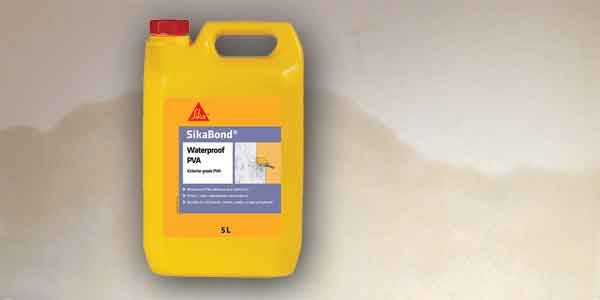The DIY Fix is reader supported. When you buy after clicking a link on our site, we may earn an affiliate commission.

Damp in a property can be irritating and inconvenient at the best of times. At worst, if left untreated long enough, it can be very damaging.
It’s unsurprising that people will look at many potential solutions to avoid or solve this problem.
One solution that some people may consider, is to use PVA to seal surfaces from damp. But, how effective will PVA be in sealing a damp wall? And will it stop the problem of penetrating damp?
The bottom line is this: While PVA could have some benefits when applied to a damp wall, it is certainly not the best solution.
It will only be mildly effective in a certain set of conditions. Secondly, although a sealed wall will offer some protection against penetrating damp, the cause of the damp will need to be addressed too.
In What Conditions Can PVA be Used?
The key thing to remember is that a damp wall needs to be treated before you attempt to seal it with any substance, such as a PVA.
As a water-insoluble resin, PVA has a high bonding strength. In its simplest form, PVA, or Polyvinyl Acetate to give it is full name, is a glue. It is a common wood glue used by DIYers and professional joiners alike. And, right at the end of the spectrum, PVA becomes a versatile and effective sealer.
Here are a few ways PVA can be used to help with damp:
In cement and mortar – Adding PVA to a cement mortar mix, increases waterproofing qualities (although not by much). However, it also increases adhesion to the surface it is applied to.
With timber – PVA can sometimes be used to add a waterproof seal to timber. But you should be aware, that if the timber is to receive wear and tear, the PVA will ultimately fail. Similarly, it is not advisable to paint over PVA, as the paint will not adhere and is likely to peel.
Prior to adding render to a surface – Typically with a 2 parts PVA to 1 part water mix, surfaces can be painted with a PVA coat, to provide sealing and adhesive qualities.
On absorbent surfaces – PVA can be used to coat very absorbent surfaces, so that the required finish can be applied successfully. For example, when re-plastering artex.
The Best Way to Deal with Penetrating Damp is at the Source
While your wall may appear damp, the source of the penetrating damp is not always clear.
Like anything in life, the problem must be dealt with at its root cause. If you don’t, you are only really patching it up temporarily. And when you do that, it is bound to come undone again in time.
So, what are some sources of penetrating damp?
It can be caused by many things, such as:
- Blockages and damage, to guttering and down-pipes. This is a relatively quick and simple fix. All you need to do is to repair and unblock.
- Damaged, or dilapidated windows and doors can be a cause of penetrating damp. Drip grooves can also get blocked and suffer from a build-up of moss and dirt.
- Loose chimney flashing or missing and cracked roof tiles can allow water to penetrate.
- If there are cracks in render, water will be able to get behind and potentially enter your property.
- Over the course of time, bricks may also become porous and pointing can become worn and damaged. When this happens, water ingress is often inevitable.
These are just a few of the potential problems that could cause penetrating damp.
To learn more about potential causes and solutions for penetrating damp click here
How to Fix the Defects Causing Penetrating Damp
Once the source of the damp has been halted, internal repairs could be limited to new plaster work and decorations. At this point, if you did require an extra level of protection, a specialist damp resistant plaster could be a good option.
Using a product made specifically for this problem, will usually be better than any kind of PVA solution.
Many cases of penetrating damp are relatively minor and straightforward to deal with. Often you can fix and prevent future issues with basic DIY skills. Having said that, it’s also important to make sure you seek advice from a professional, before attempting any potentially dangerous repairs that may be required, such as work on the roof.
The Verdict
PVA is a versatile product that has many uses. However, sealing a damp wall is not really one of them.
Furthermore, while a PVA seal will offer some protection against penetrating damp, the crucial thing to bear in mind, is that penetrating damp must be dealt with at its source.
Prevention is better than cure!
Therefore, sealing walls makes sense as an additional protection against damp. But you also need to find what is actually causing the problems. Once you have fixed the root cause you may even find that an internal sealant is no longer required.




